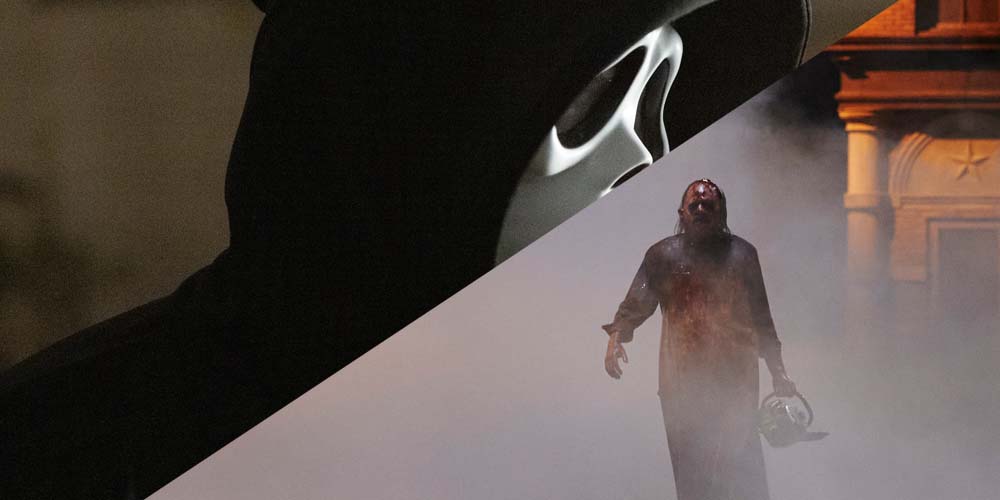|
Review by Sean Boelman
It's been nice to see horror films become a major moviegoing event again, but at what cost does that come? There is no better feeling than sitting in a packed house with a crowd of (respectful) fans waiting to be scared. But these days, horror is the only genre of film that relies more on franchise goodwill than superhero flicks. Why does it work in this genre and not others?
The first attempt to kickstart some sort of legacy horror was in the 1990s. Wes Craven's 1994 film New Nightmare was exceptionally ahead of the curve for meta-commentary and following up a widely-beloved original. Featuring the actors from the original A Nightmare On Elm Street playing both fictionalized versions of themselves and their characters, the film was well-received by critics. Still, being the lowest-grossing film in the franchise implies audiences weren't quite ready for its unique brand of weirdness. Just four years later, the Halloween franchise would have Halloween H20, which would be much more of a financial success. After a string of sequels that took the canon in unusual (and generally maligned) directions, it was nice to see a film that brought back the original film's main star, Jamie Lee Curtis. But then its sequel, Halloween: Resurrection, didn't do as well, seemingly killing nostalgia-driven horror sequels. But how did we get to a point where every franchise now seems to be doing a nostalgia sequel? Blumhouse managed to pull off a massive hit with David Gordon Green's 2018 Halloween — fitting given that the same franchise was one of the initial ones to try to cash in on series nostalgia. And now audiences are stuck in a perpetual cycle of horror films trying to one-up their predecessors while still paying homage. The first two months of 2022 alone have seen two legacy horror films. First was Scream, a new entry in an already self-aware series that attempts to be even more self-aware. But it doesn't seem to be aware that the franchise's late creator Wes Craven had already done the same gimmick twice before (the aforementioned New Nightmare and 2011's Scream 4). Netflix's legacy sequel Texas Chainsaw Massacre is one of the few that has genuinely one-upped its predecessor. Considered by many to be a pinnacle of low-budget filmmaking, Tobe Hooper's original slasher film is relatively tame in retrospect. The new movie doubles down on the gore with an insane body count, and while it isn't without its fair share of flaws, it actually feels like it has a reason to exist beyond the nostalgia. So is this trend one that is worth continuing? Few, if any, of the legacy horror movies that have come out are unwatchable, but one must wonder why Hollywood won't take any chances on big-budget original horror. A Quiet Place was a huge hit, spawning a franchise of its own. Was that just lightning in a bottle? There aren't many horror franchises left to be revived.
0 Comments
Leave a Reply. |
The Snake HoleRetrospectives, opinion pieces, awards commentary, personal essays, and any other type of article that isn't a traditional review or interview. Archives
April 2024
Categories
All
|
|
|
disappointment media
Dedicated to unique and diverse perspectives on cinema! |

